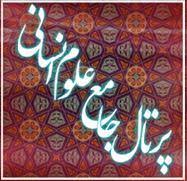About the journal
About Quranic Studies Journal
Holy Quran is a precious Divine Book which is of enormous values from different aspects. This Divine book can be studied in relation with various sciences beside the lingual and rhetorical criteria. That's why we have attempted to publish the present quarterly. We have started in August 8th, 2012 with the kind assistant of Islamic Azad University, Jiroft branch manager, research deputy, economic deputy and the involved colleagues in science ministry specially the ministry's research deputy and the research director general to enable the science scholars and students to offer their papers and articles through quarterly website and to make the access to the previous articles.
At last we are looking forward to receiving your articles and papers.
Once again I appreciate all credits and involved in designing and new website manager who pave the way for our friends and scholars.
-
Open Access Article
1 - Investigation of white marriage from the point of view of jurisprudence, law and Quran
Masoumeh Tajaldeni * ، hadise salari ، leyla mehrabiradIssue 58 , Vol. 15 , Summer 2026 -
Open Access Article
2 - Positive Thinking and its Functions from Holy Quran’s Perspective
Alireza ZolfaqariIssue 48 , Vol. 12 , Winter 2021 -
Open Access Article
3 - The Unity of Existence in Holy Quran Verses and Narrations
Seyyed Mojtaba Mousavi Darrehbidy ، Mohammad Ali Heidari *Issue 48 , Vol. 12 , Winter 2021 -
Open Access Article
4 - Existential Philosophy on the Meaning of Life from Doctrines of Psychology and Holy Quran’s the Viewpoint
Kolthoum Fazlali ، Javanshir Asadi *Issue 48 , Vol. 12 , Winter 2021 -
Open Access Article
5 - The relationship between the behavior of the Jewish people and the maximum mention of the Israelites in the Qur'an
abbasali alimohammadi * ، Mahdi Afchangi * ، sayyed reza mosavi *Issue 51 , Vol. 13 , Winter 2022 -
Open Access Article
6 - Explaining Quranic Reading of “Contentment” as the Factor of Pure life’s Interpenetration in Nahj Al Balaghah
Seyyed Ali Seyyed Taher Al Dini ، Mahshid Izadi ، Najmeh VakiliIssue 40 , Vol. 10 , Winter 2020 -
Open Access Article
7 - A Study on Viand Meaning in 5th Verse of Al Ma'ede Surah
Nahid Dehghan Afifi ، Amir Omrani SardoIssue 32 , Vol. 8 , Winter 2018 -
Open Access Article
8 - A comparative study of the International Declaration of Human Rights with Quranic teachings
moein sabahi goraghani * ، Hamidreza DejanIssue 56 , Vol. 14 , Spring 2024 -
Open Access Article
9 - Reviewing and Evaluating the Tahereh Saffarzadeh and Mohammad Ali Koosha's Translations Based on Antoine Bremen's Theory of "Deforming Tendencies" (Case study in Surah Al-Baqarah)
godarz kakavandi ، mohammadhassan masoomi * ، mohammadreza yousefiIssue 49 , Vol. 13 , Summer 2022 -
Open Access Article
10 - The time and place of the soul in the fetus with emphasis on explanatory verses and hadiths
ahmad rezvanimofra * ، Ensiyeh NourahmadiIssue 52 , Vol. 13 , Winter 2023











